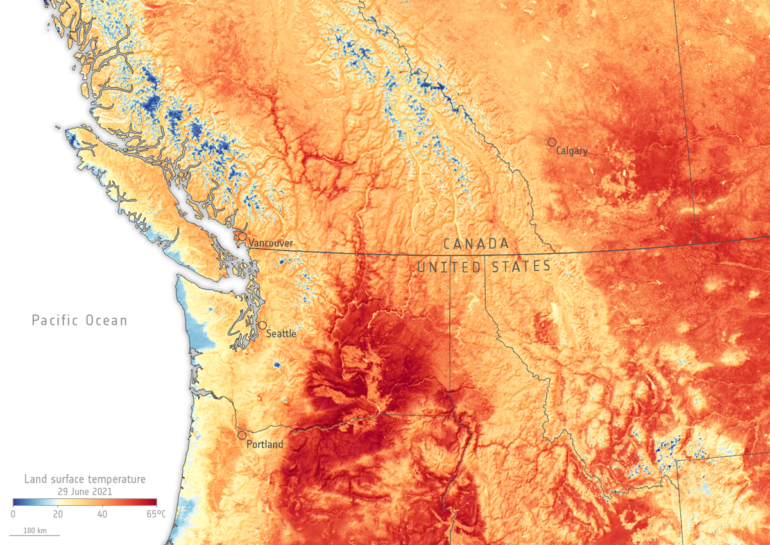An extreme heat wave struck the Pacific Northwest in June 2021. Temperatures soared above 40°C (104°F) across Oregon, Washington, and British Columbia, sometimes even approaching 50°C (122°F). Experts estimate that at least several hundred people died as a result.
In a recent paper published in Earth’s Future, Schumacher and colleagues identified earthly factors that caused the heat wave.
The researchers teased apart potential causes using the Community Earth System Model, an atmospheric model developed by the National Center for Atmospheric Research and made freely available for the climate community to use.
The heat wave started thousands of kilometers away from the Pacific Northwest in the northern Pacific Ocean, the researchers found. Above the open sea, high humidity charged potential energy in the air. This amped-up air traveled thousands of kilometers on air streams known as “conveyor belts” to reach western North America.
From there, it spiraled down toward the ground, where the potential energy converted into heat. This hot air went on to spread both vertically and horizontally. The vertical spread funneled additional heat down from higher in the atmosphere, and the horizontal spread brought dangerously high temperatures to a broad geographic area.
Extremely low soil moisture also contributed to the heat wave, the authors say. Wet soils buffer extreme heat, and had the land conditions been moister, temperatures might have been 5°C cooler.
As bad as the heat wave was, it still could have been worse, the researchers say. The soil could have been even drier, the region upwind could have been warmer, and the air above the Pacific Ocean could have been moister. As the planet heats in the future, the authors expect these trends to bear out.
More information:
D. L. Schumacher et al, Drivers and Mechanisms of the 2021 Pacific Northwest Heatwave, Earth’s Future (2022). DOI: 10.1029/2022EF002967
This story is republished courtesy of Eos, hosted by the American Geophysical Union. Read the original story here.
Citation:
Far-flung forces caused the 2021 Pacific Northwest heat wave, say researchers (2022, December 27)



